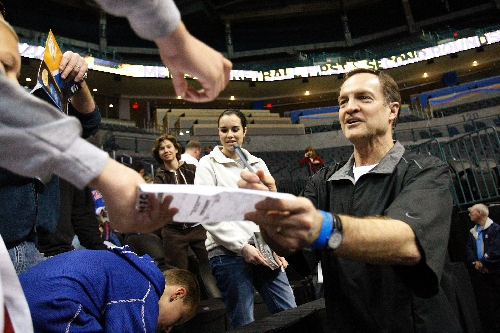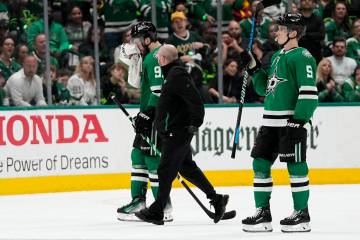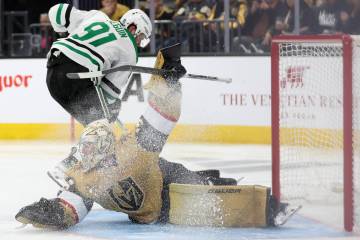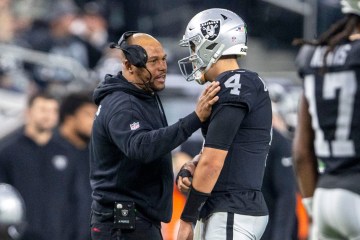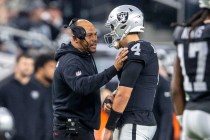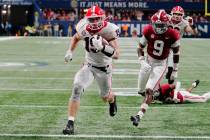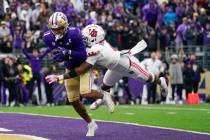NCAA’s earlier entry deadline a risk worth taking
Every once in a while, if you search closely and without bias, you can discover it.
Something the NCAA has done correctly in regard to its rules.
Early entry. Two words that keep college basketball coaches up late at night trembling, along with block-charge and Joe Lunardi.
What the NCAA has done, however, in regard to underclassmen who want to wade in the NBA Draft waters without potentially drowning their professional careers before they begin, is better protect the college game.
A good thing.
The annual state of limbo for many college teams around the country has begun. Players who have a legitimate opportunity of earning NBA contracts, and countless others who think they do but never will come closer to guarding LeBron or Kobe than with a Wii controller, have declared their intentions to have their games evaluated by league personnel, with the option of returning to school or ending their college eligibility based on feedback received.
Some never listen, remain in the draft and end up learning way more than they wanted about the hot spots in places such as Albuquerque, N.M., and Fayetteville, N.C., and, well, Istanbul, Turkey.
But in moving the deadline up five weeks for underclassmen to withdraw from the draft or never again be allowed to use their meal cards at the campus cafeteria, the NCAA is discouraging more players from leaving school early. Might backfire. Might not.
But it's the NCAA's responsibility to look out first for its member schools.
Players had until June 25 to withdraw and retain eligibility last year; that date now is May 8.
This is a big-picture thing. There always will be kids who have no interest in school and, whether they are good enough or not to make an NBA team, should have every right to chase their dream and leave the student-athlete part to those who embrace it.
Many believe the earlier deadline will mean more players remaining in the draft, that fewer chances for them to be seen will result in decisions players will live to regret.
It's like everything. A risk.
Moving the deadline allows programs to have a clearer picture of what their rosters will look like come October. It's true May 8 falls late in the spring signing period (which ends May 19) and a better withdraw deadline might have been as early as mid-April, but there still are undecided recruits out there. There still are available players teams can pursue if they're about to lose others to the draft.
"You could have kids testing the waters, and then all of a sudden on May 8 have a scholarship or two open up," UNLV coach Lon Kruger said. "The (earlier deadline) helps a program and forces a player to make a decision."
Allowing players to test the process once in a college career and return to school has been a good rule from its inception. It allows players to gauge their draft status from league executives and takes heat off college coaches who, for obvious reasons, most often want the players back and whose advice could be skewed.
It's still a brutal business. There are 30 first-round picks with guaranteed contracts attached, and, as of Tuesday, 44 underclassmen had declared for the draft, and another 15 or so were said to be still deciding. That doesn't include what annually has become a larger and larger foreign pool of players.
Oh, yeah, and those draft dinosaurs known as seniors.
"There just aren't that many spots available," said Kruger, who hasn't had an underclassmen at UNLV test the process. "Everyone wants to hear they are a first-round pick. Some are.
"But the ones to be worried about are those who perhaps get some bad advice and leave school early and don't get drafted, and have forfeited the chance to continue progress toward a college degree and are all of a sudden struggling."
The earlier deadline eliminates face-to-face meetings with executives that players find helpful and doesn't allow players to attend predraft camps. But college football players have just 72 hours to withdraw from the NFL Draft, and most of the evaluating by NBA teams -- maybe as much as 70 percent -- is done during the college season.
It shouldn't take months to make a decision, and by pushing the deadline up, agents and runners for agents and others with single-minded motives have less time to influence players who have no business leaving early.
The NCAA is handling early entry the correct way, just as it did when deciding to allow players to receive expenses for a 48-hour period to travel and work out for NBA teams.
These kinds of rules encourage kids who should remain in school to do so. That's never a bad thing.
It's a risk, this earlier deadline.
But it's a good one.
Las Vegas Review-Journal sports columnist Ed Graney can be reached at egraney@reviewjournal.com or 702-383-4618.



